(1)
Narayana Hridayalaya Multispeciality, Bangalore, India
This chapter contains surgical procedures that are routine in head and neck surgery. These are basic procedures that are generally performed by residents and fellows.
Few important points are discussed for each of the procedure.
1.
Lymph node biopsy
2.
Tracheostomy
3.
Submandibular gland excision
4.
Secondary tracheoesophageal puncture
5.
Sentinel node biopsy
Lymph Node Biopsy
This section demonstrates the surgical procedure to do lymph node biopsy for level II lymph node.
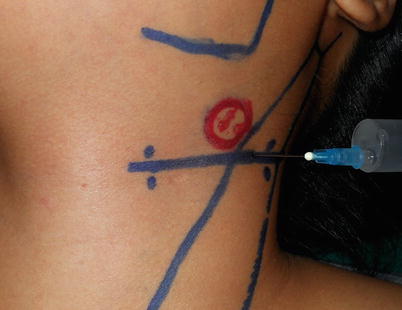
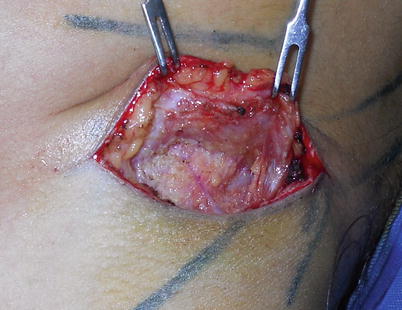

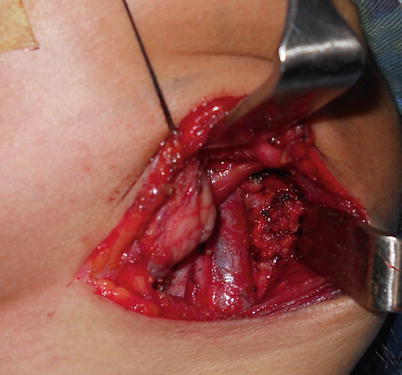
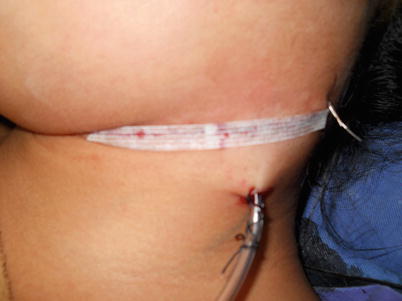

Fig. 2.1
Incision is marked for the procedure. The surface marking is showing lymph node in relation to the sternocleidomastoid (SCM) muscle and angle of mandible. The infiltration of adrenaline in line of incision reduces bleeding during skin incision

Fig. 2.2
The flaps are raised in the subplatysmal plane. It is advisable to perform this procedure in general anesthesia when the node is deep and near the internal jugular vein (IJV). Some level V nodes can be removed in local anesthesia

Fig. 2.3
The photograph shows exposed SCM muscle, posterior belly of digastric and submandibular gland

Fig. 2.4
The level II lymph node area is exposed after identifying the IJV and spinal accessory nerve. The large node is removed for evaluation

Fig. 2.5
The wound is closed in layers after drain insertion. The drain is optional and depends upon the extent of dissection performed
Tracheostomy
Tracheostomy is a life-saving procedure, and all doctors should be able to perform it in a safe way. It is relatively simple if surgical principles are observed all throughout. This procedure can result in life-threatening complications in case due care is not taken. The procedure can be performed under local anesthesia in emergency or can be performed in an intubated patient in a planned setup.
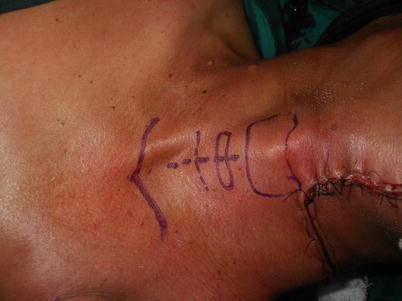
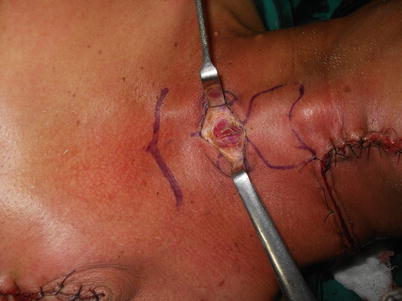
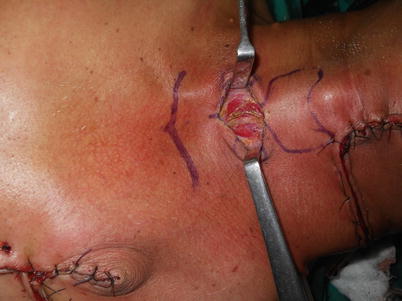
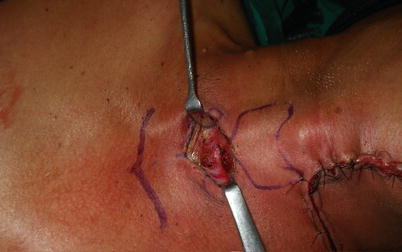
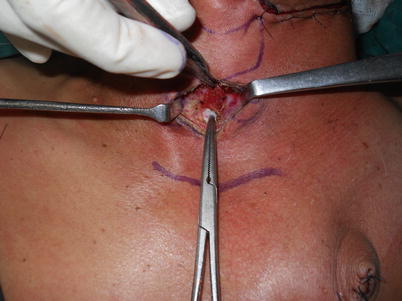
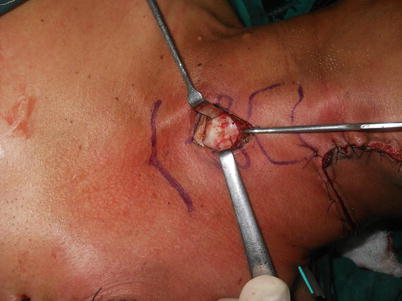





Fig. 2.6
Surface marking for incision. The most important aspect of this procedure is to stay strictly in midline. The incision is generally placed midway between the cricoid cartilage and suprasternal notch in midline. The vertical incision is used in emergency, and horizontal incision is better for cosmesis and used in planned setup. One must not compromise on exposure by using very small incision

Fig. 2.7
The vertical incision is placed for about 2 cm. It is essential to put the neck in maximum extension before starting the procedure so the trachea comes as anterior as possible. It is also a good practice to palpate for the subclavian artery before the procedure as it can arch higher in some cases and one needs to be careful about avoiding it

Fig. 2.8
The deep fascia over strap muscle is divided in the midline. The strap muscles are separated from each other in the midline. It helps to continuously palpate the trachea to have an idea about the midline. One may have to ligate the anterior jugular vein on either side in some cases, but care must be taken to secure them or they can cause bleeding later on

Fig. 2.9
The strap muscles are retracted laterally to expose the thyroid gland. One must be careful in avoiding injury to the capsule and gland or it can lead to persistent ooze

Fig. 2.10
The thyroid gland is mobilized upwards to expose the trachea. A thyroid hook is used to retract the thyroid upwards

Fig. 2.11
The trachea is completely exposed and pre-tracheal fascia is separated to avoid small bleeding while making a window in the trachea
< div class='tao-gold-member'>
Only gold members can continue reading. Log In or Register to continue
Stay updated, free articles. Join our Telegram channel

Full access? Get Clinical Tree


